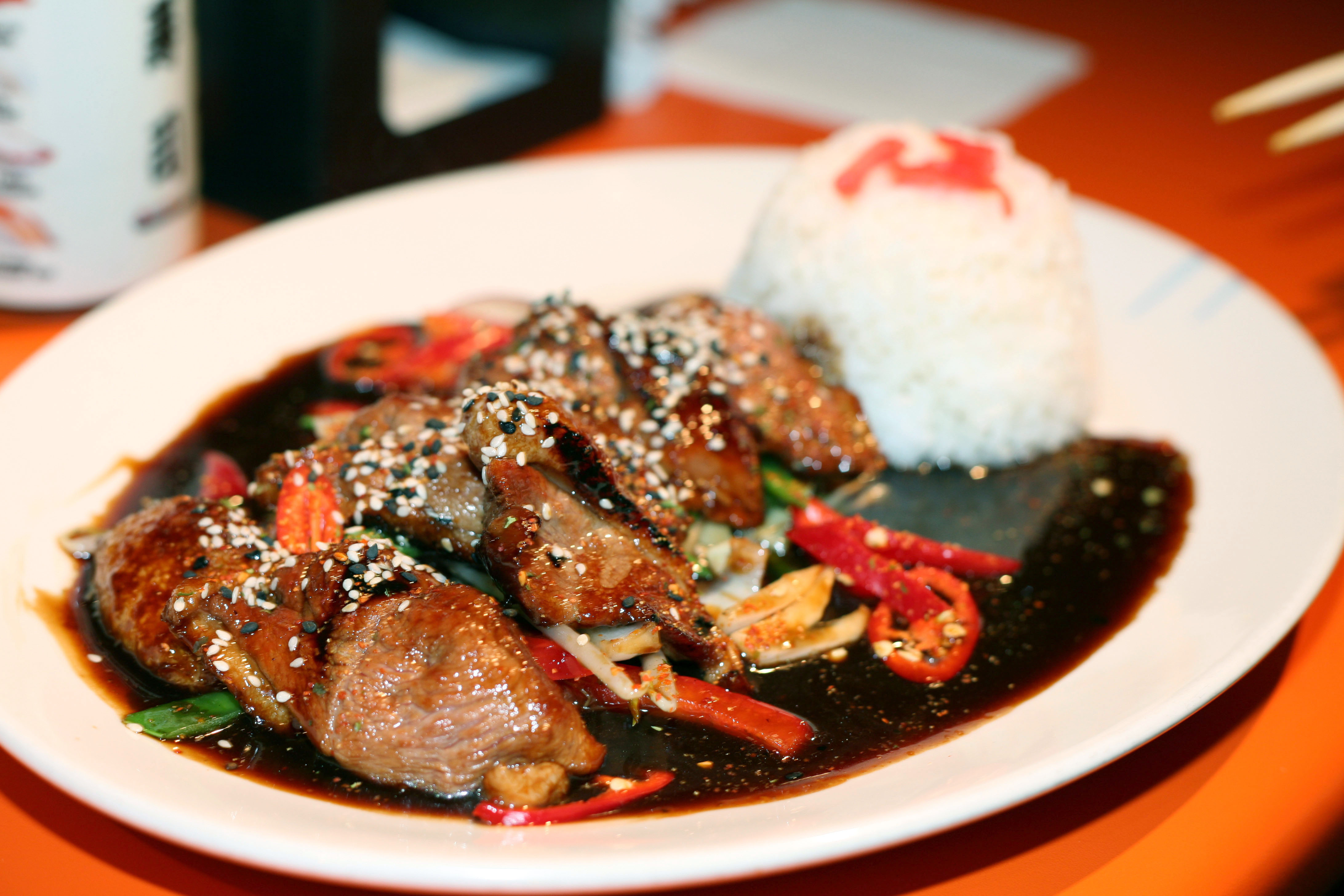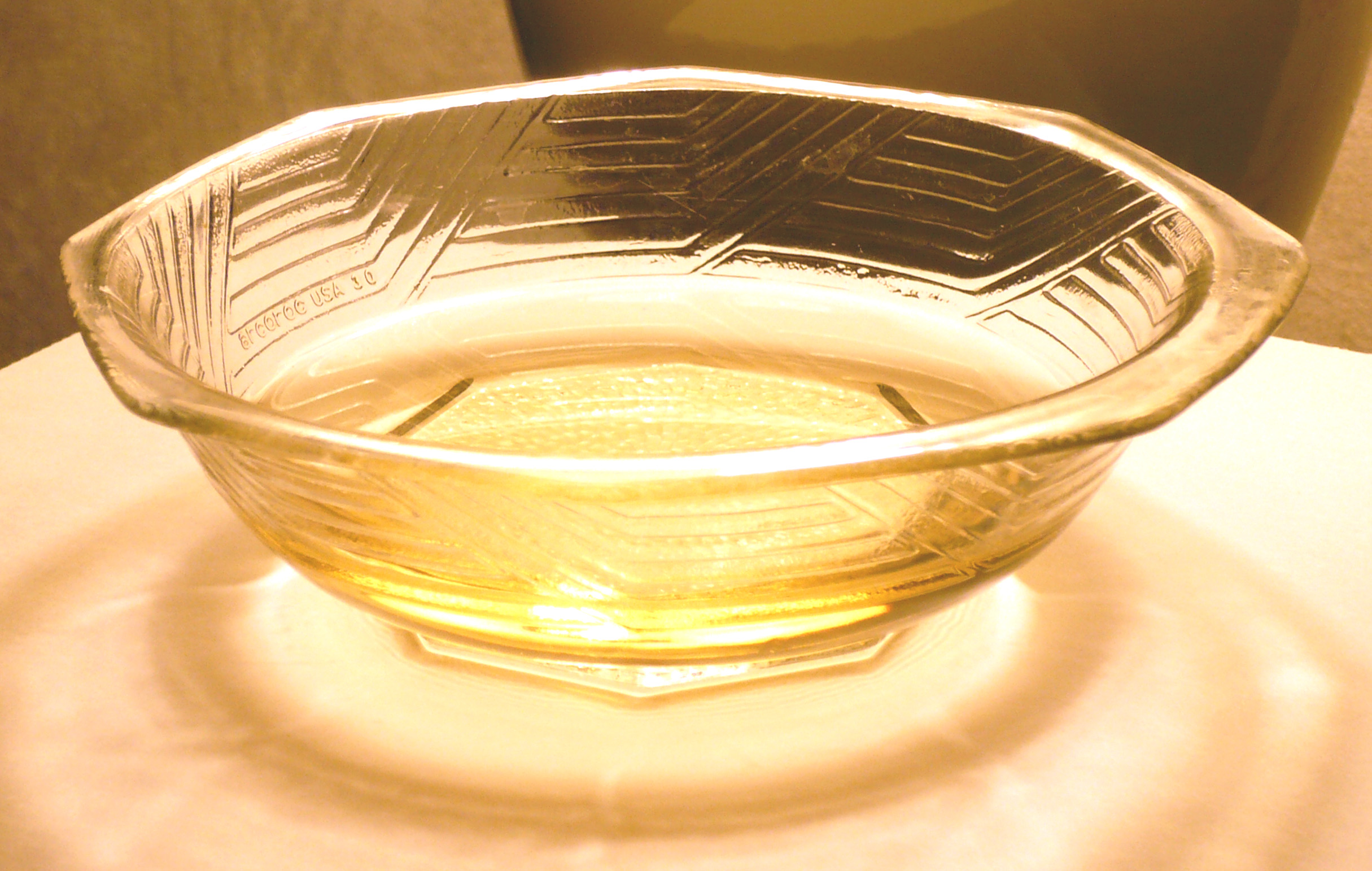|
Teriyaki
''Teriyaki'' (kanji: 照り 焼き) is a cooking technique used in Japanese cuisine in which foods are broiled or grilled with a glaze of soy sauce, mirin, and sugar. Fish – yellowtail, marlin, skipjack tuna, salmon, trout, and mackerel – is mainly used in Japan, while white and red meat – chicken, pork, lamb, and beef – is more often used in the West. Other ingredients sometimes used in Japan include squid, hamburger steak, and meatballs. The word ''teriyaki'' derives from the noun , which refers to a shine or luster given by the sugar content in the , and , which refers to the cooking method of grilling or broiling. Traditionally the meat is dipped in or brushed with sauce several times during cooking. Teriyaki was invented by Japanese chefs in the 1600s. The is traditionally made by mixing and heating soy sauce, sake (or mirin), and sugar (or honey). The sauce is boiled and reduced to the desired thickness, then used to marinate meat, ... [...More Info...] [...Related Items...] OR: [Wikipedia] [Google] [Baidu] |
Japanese Cuisine
Japanese cuisine encompasses the regional and traditional foods of Japan, which have developed through centuries of political, economic, and social changes. The traditional cuisine of Japan (Japanese: ) is based on rice with miso soup and other dishes; there is an emphasis on seasonal ingredients. Side dishes often consist of fish, pickled vegetables, and vegetables cooked in broth. Seafood is common, often grilled, but also served raw as sashimi or in sushi. Seafood and vegetables are also deep-fried in a light batter, as '. Apart from rice, a staple includes noodles, such as soba and udon. Japan also has many simmered dishes, such as fish products in broth called , or beef in and . Historically influenced by Chinese cuisine, Japanese cuisine has also opened up to influence from Western cuisines in the modern era. Dishes inspired by foreign food—in particular Chinese food—like ramen and , as well as foods like spaghetti, curry and hamburgers, have been adapted to Japanes ... [...More Info...] [...Related Items...] OR: [Wikipedia] [Google] [Baidu] |
Mirin
is a type of rice wine and a common ingredient in Japanese cooking. It is similar to sake but with a lower alcohol content and higher sugar content. The sugar content is a complex carbohydrate that forms naturally during the fermentation process; no sugars are added. The alcohol content is further lowered when the liquid is heated. Three types of mirin are common. The first is ''hon mirin'' (literally: true mirin), which contains about 14% alcohol and is produced by a 40 to 60 day mashing (saccharification) process. The second is ''shio mirin'' (literally: salt mirin), which contains a minimum of 1.5% salt to prevent consumption in order to avoid alcohol tax. The third is ''shin mirin'' (literally: new mirin), or ''mirin-fu chomiryo'' (literally: mirin-like seasoning), which contains less than 1% alcohol, yet retains the same flavor. In the Edo period, mirin was consumed as ''amazake''. O-toso, traditionally consumed for the Japanese New Year, can be made by soaking a spic ... [...More Info...] [...Related Items...] OR: [Wikipedia] [Google] [Baidu] |
:Category:Japanese Words And Phrases
{{Commons Words and phrases by language Words Words A word is a basic element of language that carries an objective or practical meaning, can be used on its own, and is uninterruptible. Despite the fact that language speakers often have an intuitive grasp of what a word is, there is no consen ... Words ... [...More Info...] [...Related Items...] OR: [Wikipedia] [Google] [Baidu] |
Trout
Trout are species of freshwater fish belonging to the genera '' Oncorhynchus'', ''Salmo'' and ''Salvelinus'', all of the subfamily Salmoninae of the family Salmonidae. The word ''trout'' is also used as part of the name of some non-salmonid fish such as ''Cynoscion nebulosus'', the spotted seatrout or speckled trout. Trout are closely related to salmon and char (or charr): species termed salmon and char occur in the same genera as do fish called trout (''Oncorhynchus'' – Pacific salmon and trout, ''Salmo'' – Atlantic salmon and various trout, ''Salvelinus'' – char and trout). Lake trout and most other trout live in freshwater lakes and rivers exclusively, while there are others, such as the steelhead, a form of the coastal rainbow trout, that can spend two or three years at sea before returning to fresh water to spawn (a habit more typical of salmon). Arctic char and brook trout are part of the char genus. Trout are an important food source for humans and wildlife, ... [...More Info...] [...Related Items...] OR: [Wikipedia] [Google] [Baidu] |



